Tag: history
Eerikinkronikka [Eric’s Chronicle]
6 March 2014 | Mini reviews, Reviews
 Eerikinkronikka
Eerikinkronikka
[Eric’s Chronicle]
Finnish translation by Harry Lönnroth, Martti Linna
Helsinki: Suomalaisen Kirjallisuuden Seura [Finnish Literature Society], 2013. 221pp.
ISBN 978-952-222-445-3
€35, hardback
Eerikinkronikka (Erikskrönikan) is both an important source of knowledge about Finland’s medieval history and a chivalric epic poem. The Old Swedish text was possibly written during the 1320s by Duke Eric’s secretary, the priest Torkel Kristinsson. Philologist Harry Lönnroth and historian Martti Linna have translated the work into Finnish for the first time, in prose form, with an extensive introduction by Lönnroth. The epic depicts the political history of Sweden in the 13th and 14th centuries, and also the struggle for power within the family of the well-known statesman Birger Jarl (died 1266). One of the central characters is the idealised Duke Eric (died c.1318), whose son becomes King Magnus Eriksson. The narrator comments on events in a laconic style that often has a religious tinge. The epic gives a vivid and dramatic account of chivalric life and life in the kingdom of Sweden, of which Finland was a part. At the time the Swedes were consolidating their power in Finland; the work mentions Birger’s ‘crusade ‘ to Häme in southern Finland, the founding of Häme Castle, and battles in Karelia.
Translated by David McDuff
Avartuva maailma. Kartta-aarteita A. E. Nordenskiöldin kokoelmasta [The expanding world. Treasures of the A.E. Nordenskiöld Map Collection]
27 February 2014 | Mini reviews, Reviews
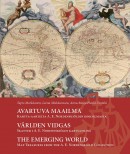 Avartuva maailma. Kartta-aarteita A. E. Nordenskiöldin kokoelmasta
Avartuva maailma. Kartta-aarteita A. E. Nordenskiöldin kokoelmasta
[The expanding world. Treasures of the A.E. Nordenskiöld Map Collection]
Tapio Markkanen, Leena Miekkavaara , Anna-Maija Pietilä-Ventelä
Helsinki: Finnish Literature Society, 2013. 175 pp., ill .
ISBN 978-952-222-431-6
€47, paperback
In the late 19th century the Finnish-born scientist and explorer Adolf Erik Nordenskiöld (1832–1901) assembled an extensive collection of historical maps which gained international recognition. The collection is housed in the Finnish National Library and in 1997 was included in UNESCO’s Memory of the World register. In 2013 an exhibition featuring part of the collection was held in Helsinki. Avartuva maailma is a beautifully illustrated book, with large pages containing plenty of text (in Swedish and English). Professor Tapio Markkanen examines the changing picture of the world from antiquity to modern times, as well as the development of maps and cartography. In some ancient maps the continents were portrayed in the likeness of people or animals, or with the south being placed at the top. An essay by map historian Leena Miekkavaara traces Nordenskiöld’s biography, showing how he acquired world fame after making the first complete crossing of the Northeast Passage in 1878. The Collection is presented and introduced by the researcher Anna-Maija Pietilä-Ventelä, with illustrations that also cover the history of cartography.
Translated by David McDuff
Markku Jokisipilä & Janne Könönen: Kolmannen valtakunnan vieraat. Suomi Hitlerin Saksan vaikutuspiirissä 1933–1944 [Guests from the Third Reich. Finland in the sphere of influence of Hitler’s Germany 1933–1944]
20 February 2014 | Mini reviews, Reviews
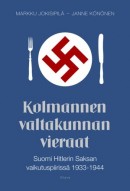 Kolmannen valtakunnan vieraat. Suomi Hitlerin Saksan vaikutuspiirissä 1933–1944
Kolmannen valtakunnan vieraat. Suomi Hitlerin Saksan vaikutuspiirissä 1933–1944
[Guests from the Third Reich. Finland in the sphere of influence of Hitler’s Germany 1933–1944]
Helsinki: Otava, 2013. 602 pp., ill .
ISBN 978-951-1-26881-9
€37, hardback
Germany had long been a great power with close historical ties to Finland, and when Hitler took over in 1933 the bond was still largely intact. Some Finnish cultural and scientific figures admired the new Germany and accepted its ideology, whereas the views of many Finland’s soldiers were influenced by the help received from Germany during the Civil War of 1918 and by the threat from the neighbouring Soviet Union. During the Winter War of 1939–40, when the Soviet Union attacked Finland and Germany was formally a Soviet ally, relations cooled. After the Winter War politicians sought support from Germany for reasons of Realpolitik, in preparation for another conflict. When the Germans invaded the Soviet Union during the Continuation War of 1941–1944, they sent military supplies to Finland and troops to the country’s north. Cultural relations with the Baltic superpower flourished. Hitler’s attendance in 1942 at the birthday party of Marshal Mannerheim (well known to be an Anglophile) was a spectacular display of Finnish-German friendship. However, no persecution of Jews took place in Finland. When it became obvious that Germany would be defeated, even the Nazis’ enthusiastic friends distanced themselves from them, and in the Lapland War of 1944–45 the German soldiers were driven out of Finland. The book provides a vivid and comprehensive reminder of a time when many Finns put their trust in Hitler’s Germany and were flattered to receive its attention.
Translated by David McDuff
Human destinies
7 February 2014 | Articles, Non-fiction
To what extent does a ‘historical novel’ have to lean on facts to become best-sellers? Two new novels from 2013 examined
When Helsingin Sanomat, Finland’s largest newspaper, asked its readers and critics in 2013 to list the ten best novels of the 2000s, the result was a surprisingly unanimous victory for the historical novel.
Both groups listed as their top choices – in the very same order – the following books: Sofi Oksanen: Puhdistus (English translation Purge; WSOY, 2008), Ulla-Lena Lundberg: Is (Finnish translation Jää, ‘Ice’, Schildts & Söderströms, 2012) and Kjell Westö: Där vi en gång gått (Finnish translation Missä kuljimme kerran; ‘Where we once walked‘, Söderströms, 2006).
What kind of historical novel wins over a large readership today, and conversely, why don’t all of the many well-received novels set in the past become bestsellers? More…
Mad men
5 December 2013 | Non-fiction, Reviews
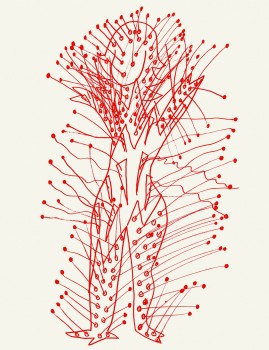
lllustration from the cover of Hulluuden historia
Hulluuden historia
[A history of madness]
Helsinki: Gaudeamus, 2013. 456 pp.
ISBN 978-952-495-293-4
€39, hardback
The Hippocratic Oath’s principle, primum non nocere – ‘first, do no harm’ – has been particularly difficult to apply in practice for doctors who have devoted themselves to sicknesses of the soul.
The breaking with this principle is the first thing to strike the reader in Professor of Science and Ideas Petteri Pietikäinen’s book, Hulluuden historia, which is overflowing with ideas.
This could be due to the vast amount of information contained within the book, combined with its slightly chaotic structure. It skips between a chronological and thematic narratives, and the author’s own involvement in his text varies, meaning that the text itself swings between vigorously discursive, and something that is little more than a sluggish retelling. Taking in everything Pietikäinen wants to say is difficult; the reader inevitably begins to grope for exciting details, and there are of course plenty of those to be found.
The sad thing is that the development of mental health care has not advanced steadily at all from its dark and ignorant beginnings towards a brighter and more enlightened present. Setbacks, especially concerning patients’ safety, have been many. Even if we ignore centuries of exorcisms, abuse, and care in the form of incarceration, punishment, and physical punishment, the 20th century has a wealth of gruesome examples to offer. More…
Anna-Lena Laurén: Frihetens pris är okänt. Om demokratiska revolutioner i Georgien, Ukraina och Kirgizistan [The price of freedom is unknown: On democratic revolutions in Georgia, Ukraine and Kyrgyzstan]
22 November 2013 | Mini reviews, Reviews
 Frihetens pris är okänt. Om demokratiska revolutioner i Georgien, Ukraina och Kirgizistan
Frihetens pris är okänt. Om demokratiska revolutioner i Georgien, Ukraina och Kirgizistan
[The price of freedom is unknown: On democratic revolutions in Georgia, Ukraine and Kyrgyzstan]
Helsinki: Schildts & Söderströms, 2013. 212 pp., ill.
ISBN 978-951-523-227-4
€25, paperback
Finnish edition:
Kuinka kallis vapaus – värivallankumouksista Georgiassa, Ukrainassa ja Kirgisiassa
Suomentanut [Translated into Finnish by] Liisa Ryömä
Helsinki: Teos, 2013. 219 pp., ill.
ISBN 978-951-851-473-5
€28.40, paperback
Anna-Lena Laurén (born 1976) is an award-winning Finland-Swedish journalist, author and Moscow-based foreign correspondent. In this volume of reportage, she investigates three post-Soviet states after their ‘democratic revolutions’, which took place between 2003 and 2005. Georgia, Ukraine and Kyrgyzstan differ from one another in many respects. Georgia has made the most progress along the road to democracy, but even it remains an authoritarian state. Ukraine is plagued by corruption; impoverished Kyrgyzstan – culturally and linguistically divided, like Ukraine – is relatively free, but corruption is rife. For good or ill, these countries are overshadowed by their former ruling power, the present-day nation of Russia. Anna-Lena Laurén has listened with a keen ear to politicians, intellectuals, farmers and workers, as well as members of minority groups. She is well-versed in the history and current situation of these countries and portrays people’s everyday lives with empathy while spotting the green shoots of democracy in among the difficulties.
Translated by Ruth Urbom
Utopia or dystopia?
15 October 2013 | This 'n' that
 ‘The fate of our societies lies in equity’, claims Martti Ahtisaari – winner of the Nobel Peace Prize in 2008 – in his foreword to a study entitled A recipe for a better life: Experiences from the Nordic countries (2013).
‘The fate of our societies lies in equity’, claims Martti Ahtisaari – winner of the Nobel Peace Prize in 2008 – in his foreword to a study entitled A recipe for a better life: Experiences from the Nordic countries (2013).
The study was compiled and written by Heikki Hiilamo and Olli Kangas with Johan Fritzell, Jon Kvist and Joakim Palme and published by Crisis Management Initiative (a Finnish, independent, non-profit organisation founded in 2000 by Ahtisaari, President of Finland from 1994 to 2000). It is available here.
‘The Nordic experience’ is presented in chapters dealing with the trustworthiness of the society, the role of the state, the amount of efficiency and inefficiency as well as the homogeneity of the Nordic societies and the social investments of these societies in their citizens.
(The Nordic countries consist of Denmark, Finland, Iceland, Norway and Sweden as well as their associated territories – with different levels of autonomy – the Faroe Islands and Greenland [Denmark] and Åland [Finland].)
‘"The Nordic enigma" is a successful marriage between hard-core competitive capitalism
and the pursuit of egalitarian policies’.
The study provides a concise summary of how these societies function with additional comments on the socio-historical development of independent Finland. It presents the reader with pros and cons, arguments and facts.
‘For some analysts the Nordic welfare state is a dystopia to be avoided at all costs....
It is simply argued that that the welfare state destroys the incentives to work.’
‘Despite their strong welfare states and heavy tax burdens – often said to be poison
to competitiveness – the Nordic countries are doing well in economic terms.’
The reader is indeed challenged to ponder the best recipes for a better life. Last but not least: how will the ‘recipes’ need to be adapted in the future?
Is this all?
10 October 2013 | Extracts, Non-fiction

Earth. Andrew Z. Colvin/Wikimedia
In today’s world, many people find that it is not the lack of something that is problematic, but excess: the same goes for knowledge. According to professor of space astronomy, Esko Valtaoja, knowledge should contribute to the creation of a better world. His latest book is a contribution to the sum of all knowledge; over the course of two hundred pages Valtaoja delves deep into the inner space of man by taking his reader on a brief tour of the universe. Extracts from Kaiken käsikirja. Mitä jokaisen tulisi tietää (‘A handbook to everything. What everybody should know’, Ursa, 2012)
Whatever god you bow down to, you’re probably worshipping the wrong god.
The above is almost the only completely certain thing that can be said about religion, and even it does not encompass any deep truth; it’s just a simple mathematical statement. The world’s biggest religion is Roman Catholicism, which is confessed, at least nominally, by 1.1 billion people. If the Roman Catholic god were the true god, the majority of people in the world are therefore worshipping a false god. (According to the official stance of the Catholic church, the other Christian denominations are heresies, and their believers will be condemned to perdition: extra ecclesiam nulla salus. This inconvenient truth is, understandably, politely bypassed in ecumenical debate. But even if all those who call themselves Christians were counted as worshipping the same god, two thirds of the world’s population are still knocking at the wrong door.)
If you’re a religious person, don’t worry; I’m not blaspheming. And if you’re a campaigning atheist, hang on a minute: all I want to do is to find a clear and undisputed starting point to consider what it is we’re talking about when we speak of religion. More…
Olli Bäckström: Polttolunnaat. Eurooppa sodassa 1618–1630 [Trial by fire. Europe at war 1618–1630]
31 July 2013 | Mini reviews, Reviews
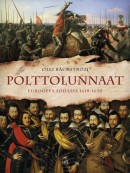 Polttolunnaat. Eurooppa sodassa 1618–1630
Polttolunnaat. Eurooppa sodassa 1618–1630
[Trial by fire. Europe at war 1618–1630]
Helsinki: Suomalaisen Kirjallisuuden Seura (Finnish Literature Society), 2013. 558 p.
ISBN 978-952-222-394-4
€39, paperback
The Thirty Years War of 1618-48 which ravaged Europe, extending its influence to overseas colonies, has been considered a religious conflict in which several countries were involved for reasons of power politics. Olli Bäckström, who belongs to the younger generation of Finnish military historians, sees the first twelve years of the war as a separate entity that bears similarities to the so-called asymmetric conflicts of our own time, such as those in Africa, which are fought by mercenaries and non-state actors for whom war is an industry and way of life. The book begins by describing the situation in Europe in the early seventeenth century, and the background of the war. Contemporary researchers view it as a religious conflict that originally began in Bohemia and then turned into a political power struggle, but Bäckström sees also the early phase as remarkably nuanced. The Nordic states of Denmark and Sweden (of which Finland was a part) were also in pursuit of fame and power on the battlefields of Central Europe, although Sweden did not really take part in the war until the next phase. Bäckström vividly portrays the alliances formed by the various political actors in order to safeguard their interests, and the methods of warfare employed by the armed forces in the service of the different rulers.
Translated by David McDuff
Findians, Finglish, Finntowns
16 May 2013 | Extracts, Non-fiction
Workers, miners, loggers, idealists, communists, utopians: early last century numerous Finns left for North America to find their fortune, settling down in Michigan, Minnesota, Wisconsin and Ontario. Some 800,000 of their descendants now live around the continent, but the old Finntowns have disappeared, and Finglish is fading away – that amusing language cocktail: äpylipai, apple pie.
The 375th anniversary of the arrival of the first Finnish and Swedish settlers, in Delaware, was celebrated on 11 May. Photographer Vesa Oja has met hundreds of American Finns over eight years; the photos and stories are from his new book, Finglish. Finns in North America

Drinking with the workmen: The Työmies Bar. Superior, Wisconsin, USA (2007)
The Työmies Bar is located in the former printing house of the Finnish leftist newspaper, Työmies (‘The workman’). The owners, however, don’t know what this Finnish word means, or how to pronounce it.
The Työmies Society, which published the newspaper of the same name, Työmies, was founded in Worcester, Massachusetts in 1903 as a socialist organ. It moved to Hancock, Michigan the following year. More…
What does the neighbour think?
26 April 2013 | Essays, Non-fiction
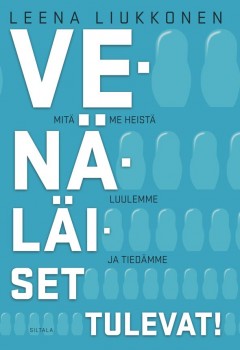 For more than 20 years journalist Leena Liukkonen has been thoroughly involved with Russian culture, commerce, language and psyche. The subtitle of her new book of essays Venäläiset tulevat! (‘The Russians are coming!’) is ‘What we think and know about them’, and refers to the fact that the Finns do not really know their eastern neighbours very well. Liukkonen writes with insight about the differences in history, mentality and world view
For more than 20 years journalist Leena Liukkonen has been thoroughly involved with Russian culture, commerce, language and psyche. The subtitle of her new book of essays Venäläiset tulevat! (‘The Russians are coming!’) is ‘What we think and know about them’, and refers to the fact that the Finns do not really know their eastern neighbours very well. Liukkonen writes with insight about the differences in history, mentality and world view
Extracts (under original subtitles) from Venäläiset tulevat! Mitä me heistä luulemme ja tiedämme (Siltala, 2013)
WAR, REMEMBERING AND FORGETTING
In café conversations with other visitors to Russia, we often react with exasperation to the fact that discussions in Finland only ever start with the Winter War. Sometimes we wonder why the threshold between us and our neighbour to the east is still so high. My own living contact with the past, however, makes it clear to me that everything the elderly carry round with them could not have been simply shaken off with the passage of time. Nor can the next generation just break away from it. My own experience also reminds me how distant our eastern neighbour was during peacetime. After all, a very few have made the long journey to the country next door. To many people, the old story was the only story there was about Russia. More…
Osmo Jussila: Neuvostoliiton tragedia. Utopiasta vankileirien saaristoksi [The tragedy of the Soviet Union. From utopia to Gulag Archipelago]
31 January 2013 | Mini reviews, Reviews
 Neuvostoliiton tragedia. Utopiasta vankileirien saaristoksi
Neuvostoliiton tragedia. Utopiasta vankileirien saaristoksi
[The tragedy of the Soviet Union. From utopia to Gulag Archipelago]
Helsinki: Otava, 2012. 448 p., ill.
ISBN 978-951-1-26521-4
€32.80, hardback
The acclaimed Russian and Soviet history scholar Osmo Jussila examines the early history of the Soviet Union from a fresh perspective. He shows how, in the years following the 1917 Revolution, an originally positive idea for a better society turned into a bureaucratic tyranny. The Soviet Union’s strong man V.I. Lenin created the Bolshevist Party as a paramilitary organisation which managed to seize power in October 1917. Even in the early years of Soviet power the ‘Red Terror’ crushed its opponents with executions and the establishment of prison camps. Although Lenin was a good professional revolutionary, he was almost incapable of building a new society: his solutions were often cruel, arbitrary and hasty. Jussila’s general view of Lenin is in line with the ideas that are familiar from more recent historical research, but the author also focuses and deepens his analysis to provide an essentially complete picture of Soviet Russia’s chaotic development and of Lenin’s role in the formation of the oppressive Soviet state.
Translated by David McDuff
Volgan mutkasta Siperiaan. Sukulais-kansat tämän päivän Venäjällä / From the Volga to Siberia. The Finno-Ugric Peoples in Today’s Russia
17 August 2012 | Mini reviews, Reviews
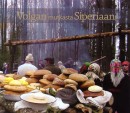 Volgan mutkasta Siperiaan. Sukulaiskansat tämän päivän Venäjällä
Volgan mutkasta Siperiaan. Sukulaiskansat tämän päivän Venäjällä
Toim. [Ed. by] Ildikó Lehtinen
Helsinki: Finnish Literature Society, 2012. 190 p, ill.
ISBN 978-952-222-345-6
€48, paperback
English-language edition:
From the Volga to Siberia. The Finno-Ugric Peoples in Today’s Russia
ISBN 978-952-222-346-3
€57, paperback
Finno-Ugric peoples make up 2.4 million of Russia’s inhabitants. This book examines the Khanty, Komi, Mari, Mordvins and Udmurt who live on the western side of the Urals, between the Volga River Bend and Western Siberia. The focus is on their ethnic identity, recent history and present-day life. Various points of view are represented in articles by expert scholars, and the subjects include language, literature, theatre, social life, and the status of the family and of women. These national cultures recovered after the most difficult part of the Soviet period, but in today’s Russia they and their languages are increasingly at risk of dying out. Russification is advancing not only because of government, but also as a result of industrialisation and urbanisation. Half of the population of these groups live in rural areas where traditions and folk beliefs are particularly strong. Photographs from different eras and drawings by Udmurt children depict the story of the indigenous cultures and the changes they have undergone. Some of the articles also shed light on the harsh situation of other Finnic peoples in Russia.
Translated by David McDuff
Northern exposure
21 June 2012 | Reviews
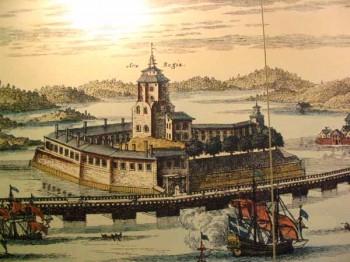
Between Helsinki and St Petersburg: Vyborg. Illustration of Vyborg Castle by an unknown artist, 1709, Wikimedia
Tony Lurcock
‘Not So Barren or Uncultivated’. British travellers in Finland 1760–1830
London: CB Editions, 2010. 230 p.
ISBN 9-780956-107398
£10.00, paperback
Finland is not unique in raising scholars who have often attempted to treat historical travellers’ accounts as source material for historical facts, and then prove how ‘wrong’ they are in relation to reality. This is an unproductive way in which to read them: travel books are nearly always based on the authors’ own country and experiences projected on what they encounter abroad.
Paradoxically, much of what was written about foreign countries in the past was really about conditions and problems in the author’s own land, and can be understood only against that background – something that also emerges in this book about British travellers in Finland. More…
Rosemarie Tsubaki: Pehr Kalm, suomalainen Amerikan löytäjä [Pehr Kalm, the Finnish discoverer of America]
8 June 2012 | Mini reviews, Reviews
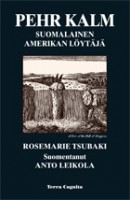 Pehr Kalm, suomalainen Amerikan löytäjä
Pehr Kalm, suomalainen Amerikan löytäjä
[Pehr Kalm, the Finnish discoverer of America]
Alkuteos [original work, in Italian]: Il Viaggio di Pehr Kalm in Nord-America 1747–1751. Dissertation, University of Genoa, 2002/2003
Suomennos [Translated by]: Anto Leikola
Helsinki: Terra Cognita, 2011. 199 p., ill.
ISBN 978-952-5697-49-0
€ 25, paperback
The Finnish naturalist and pastor Pehr (in Finnish, Pietari) Kalm (1716–79), a pupil of the famous Swedish botanist Carl von Linné, was professor of economics and rector of Turku Academy, the only university in Finland during its period under Swedish rule. Kalm gained his international reputation as a result of his account of a scientific expedition he made to north America in 1747–51, which was translated into several languages. The trip was the first scientific expedition to the New World, and Kalm paid close attention to nature as well as the economics, living conditions and culture of both colonists and native inhabitants. One of his aims was the gathering of plants for use in Sweden. Of the plants he brought back a species of hawthorn, creeper vine and purple-flowered raspberry are still cultivated in Finland. The German scholar Rosemarie Tsubaki’s doctoral thesis examines Kalm’s writings and complements it with material from other sources where Kalm’s notes have been lost. The Finnish translation is furnished with an introduction and expertly translated by Anto Leikola, Professor Emeritus of History of Science.
Translated by David McDuff
